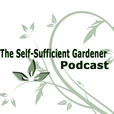
Summary: In today's episode I tackle the question of how to water one's garden. There's a bit of confusion from the communication I'm getting over how I do this and what I actually suggest. (http://theselfsufficientgardener.com/wp-content/uploads/2012/05/homebase-watering-can-300x300.jpg) * How much water is needed? * Know your soil. Some soils hold water better. The lighter color of soil the less water it holds. Humus is dark and is best. Clay is dark red or brown and second best. Silt is ok. Sand is not good. * Know your plants – what is their origin. Tomatoes and potatoes – desertous areas. * Know the signs – not enough water - yellow and drooping leaves from the bottom up. Shallow roots. Too much water – blossom end rot, lower leaves yellow, leaves drooping all over, browning of new leaves. * When watering might be warranted. * Extremely long dry conditions. * Seedlings just emerged but no rain for a few days. * Extremely hot conditions and you are trying to get fall crops to germinate. * The appropriate way to water. * use land features or make new ones to hold and store water – swales, berms, even small depressions. * slow small water, not fast or quick. So no 5 gallon bucket dumping. Drip irrigation, soaker hoses, etc. * Don’t spray the foliage but don’t freak out if you do. * Water in the afternoon on warm days. * How do I get through the gardening seasons without watering. * I live in a decent climate. Not all people will be able to use such little water. * I use mulch. I like mulch * I build soil that holds water. * I don’t get attached to plants. If one plant is particularly water needy I say my goodbyes and let it become new soil. * The benefits of not watering. * You don’t wash nutrients and minerals away from plants. One of the “vectors” of blossom end rot is watering too much and too fast. Calcium is very soluble and you can easily wash a lot of it away. * The plants roots go deeper. When they go deeper they find more nutrients and minerals. They also get to a temperature even zone that will help them resist drought, heat and cold. * You save money – by not using a water supply. * You reduce the risk of many pathogens that like damp conditions to live.
